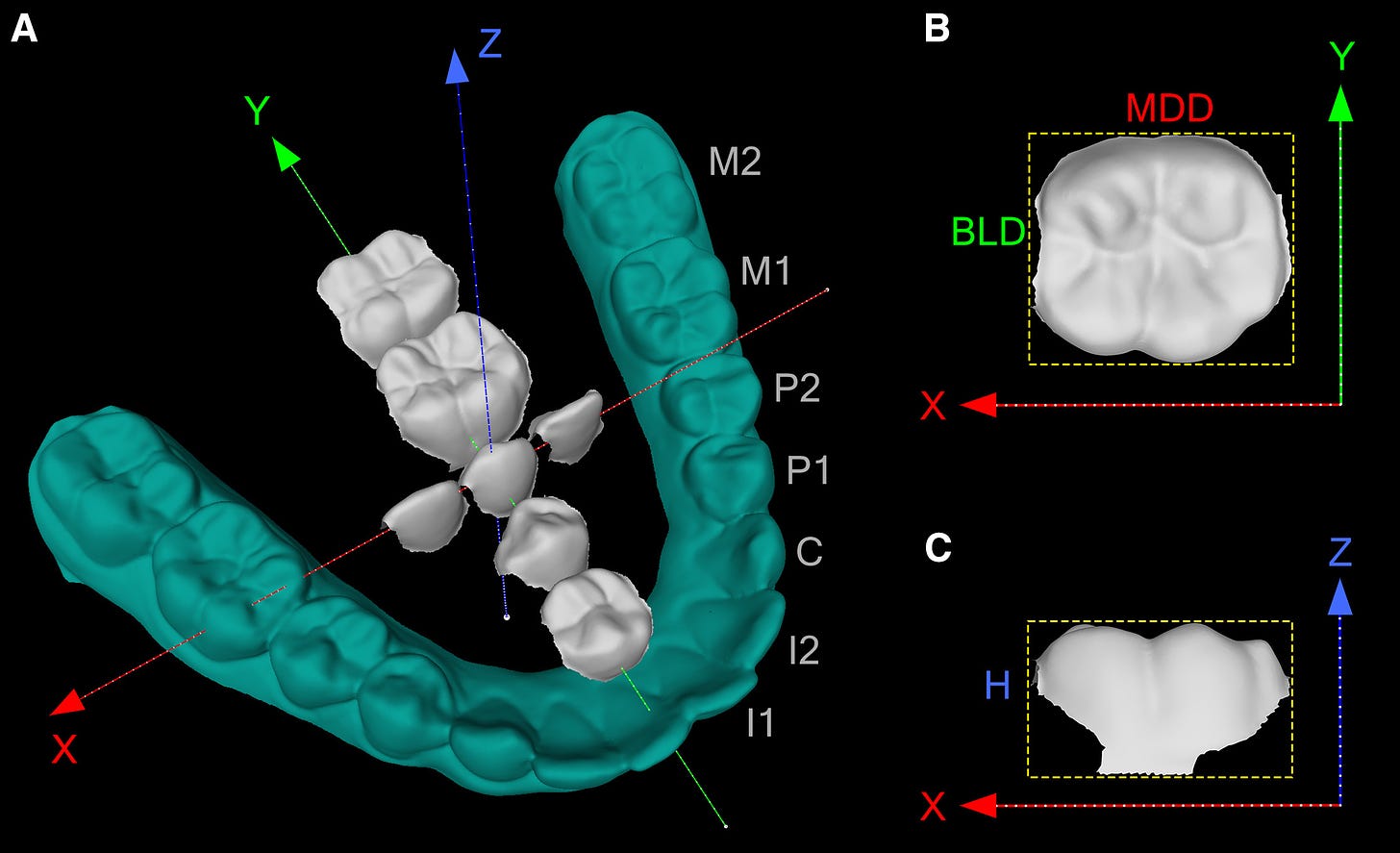Tracing the Genetic Blueprint of Teeth: Insights from Human Evolution
The Genetic Puzzle of Tooth Shape and Size
Human teeth are small marvels of biology, carrying genetic signatures that reflect millennia of evolutionary change. Recent research, published in Current Biology1, has identified 18 genome regions responsible for variations in tooth size and shape. Led by an international team from University College London (UCL), this groundbreaking study reveals that some of these traits were inherited from Neanderthals, shedding new light on the intersection of genetics and human evolution.
Dr. Kaustubh Adhikari, a UCL researcher and one of the study’s authors, emphasizes the significance of teeth in understanding humanity's past.
“Teeth can tell us a great deal about human evolution, as well-preserved ancient teeth are particularly important to archaeologists. They shed light on milestones such as when we transitioned to cooked food and human tooth sizes began to shrink.”
How the Study Was Conducted
To uncover the genetic basis for tooth dimensions, the researchers turned to a diverse dataset of 882 Colombian volunteers of mixed European, Native American, and African ancestry. Using high-resolution 3D scans of dental casts, they measured the visible parts of teeth, or dental crowns. These measurements were then cross-referenced with participants' genetic data in a genome-wide association study (GWAS) employing a multiomics approach—integrating data from multiple biological sources.
The team identified 18 genetic regions influencing tooth size and shape, 17 of which had never before been associated with dental dimensions. Among these findings was a remarkable genetic variant inherited from Neanderthals.
A Neanderthal Legacy in Modern Teeth
One of the most intriguing discoveries involved a genetic variant in the HS3ST3A1 gene, a remnant of interbreeding between ancient Homo sapiens and Neanderthals. Found exclusively in individuals of European descent, this variant correlates with thinner incisors—the eight front teeth critical for biting.
This Neanderthal-derived trait is just one example of how ancient genetic mixing continues to influence modern human biology. Dr. Qing Li of Fudan University notes that these findings could have implications beyond evolutionary anthropology, potentially contributing to advancements in dental medicine.
“Some of the genes that contribute to the normal variation of tooth dimensions among healthy people can also contribute to pathogenic variation, such as teeth failing to grow in or other dental health conditions.”
Broader Implications for Dental Evolution
The research also pinpointed the EDAR gene as a determinant of tooth width across all teeth, expanding on its previously known role in shaping incisors in East Asian populations. The findings underscore the complex interplay of genetics, environment, and evolutionary pressures in shaping human dentition.
However, the study raises new questions about whether these traits were specifically selected for their dental advantages or if they arose as byproducts of other genetic changes.
“It’s possible that the genes may have been selected due to the influences they have in other areas, with tooth shape differences resulting as a side effect,” explains Professor Andrés Ruiz-Linares, affiliated with UCL, Fudan University, and Aix-Marseille University.
A Pathway to Future Discoveries
This research not only deepens our understanding of human evolution but also opens doors to potential medical applications. Genetic insights into tooth development could one day inform diagnostic tools or gene therapies for dental anomalies. The study serves as a testament to how ancient genomes continue to illuminate both our past and our future.
Related Research
Hlusko, L. J., et al. (2016). Neanderthal teeth provide insights into dietary adaptations. Nature, 533, 242–246. DOI:10.1038/nature17404
Irish, J. D., & Guatelli-Steinberg, D. (2017). Ancient dental morphology reveals human migration patterns. Proceedings of the National Academy of Sciences, 114(34), 9026–9031. DOI:10.1073/pnas.1710341114
Fraser, G. J., et al. (2020). Genetic pathways regulating dental development in humans and primates. Science Advances, 6(12), eaay6532. DOI:10.1126/sciadv.aay6532
Schroer, K., et al. (2022). Dental evidence for early hominin dietary strategies. Journal of Human Evolution, 170, 102993. DOI:10.1016/j.jhevol.2022.102993
This foundational research connects genetics, anthropology, and medical science, showcasing how teeth are windows into our evolutionary past and medical future.
Li, Q., Faux, P., Wentworth Winchester, E., Yang, G., Chen, Y., Ramírez, L. M., Fuentes-Guajardo, M., Poloni, L., Steimetz, E., Gonzalez-José, R., Acuña, V., Bortolini, M.-C., Poletti, G., Gallo, C., Rothhammer, F., Rojas, W., Zheng, Y., Cox, J. C., Patel, V., … Ruiz-Linares, A. (2024). PITX2 expression and Neanderthal introgression in HS3ST3A1 contribute to variation in tooth dimensions in modern humans. Current Biology: CB. https://doi.org/10.1016/j.cub.2024.11.027



